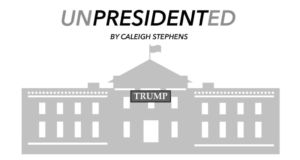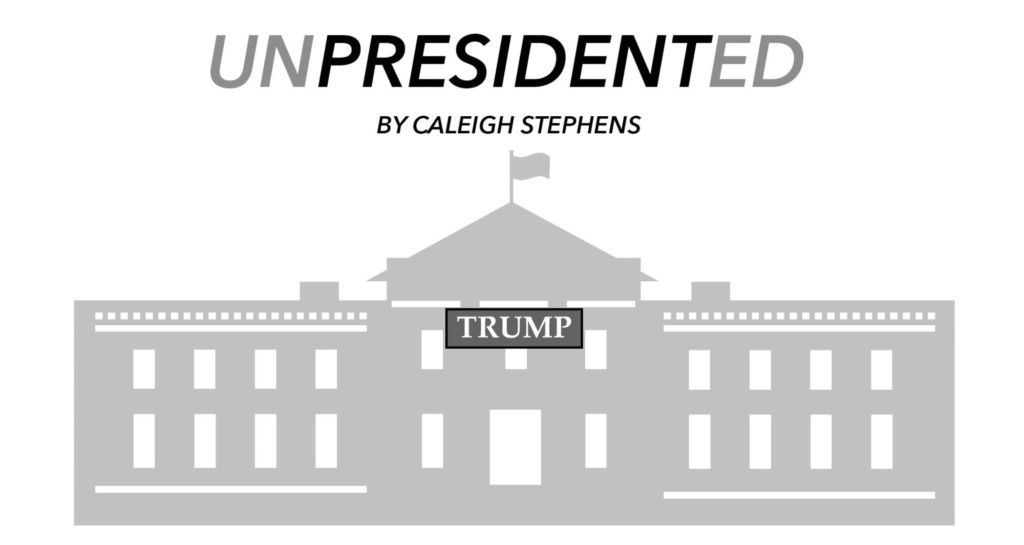
“UnPresidented” is a new weekly column discussing the transition and first days of the Trump administration.
In terms of immigration and foreign policy, this past weekend has been a whirlwind. It all began Jan. 27, when President Trump issued an executive order blocking citizens from seven Muslim-majority nations―Iran, Iraq, Libya, Somalia, Sudan, Syria and Yemen―from entering the U.S. for at least 90 days. Signed as a result of concern over the so-called existential threat of terrorist attacks from immigrants, the act is no more than thinly-veiled Islamophobia and racism. And while the list may seem comprehensive, the notable absence of several Middle Eastern nations in the ban raise suspicions that Trump’s business entanglements are already affecting foreign policy.
As could reasonably be expected, the repercussions were immediate, with Iran quickly vowing to take reciprocal action. The weekend ended on a better note than it started, however, with the White House Chief of Staff, Reince Priebus, conceding Sunday that those with green cards will not be banned from entering the U.S. in the wake of impromptu protests at major airports all around the country and a federal judge-issued stay that was ordered Saturday night, in what must be record timing for the judicial branch.
The stay is not permanent and only affects those who were held in airports at the time, and the overturn of such a ban will no doubt be a long legal battle. But even as Trump points to the 1952 law allowing the president to deem some people “inadmissible” to the U.S., there is legislation in place that prevents discrimination on the basis of national origin. Lyndon B. Johnson signed into law the The Immigration and Nationality Act of 1965, which states that “no person shall receive any preference or priority or be discriminated against in the issuance of an immigrant visa because of the person’s race, sex, nationality, place of birth or place of residence.” In other words, Trump’s executive order is illegal.
While the 1965 act does not specifically protect against discrimination on the basis of religion, Trump’s actions against Muslims still feel distinctly un-American and nowhere near the freedom of religious expression guaranteed by the First Amendment. Speaking historically, Trump’s ban has a number of eerie similarities to 19th and early 20th century laws.
Consider the Chinese Exclusion Act of 1882, which banned immigration from Chinese laborers and declared all current US citizens that were Chinese to be unlawful. Essentially a codified form of racial discrimination, the Chinese Exclusion Act stripped an entire race of their rights and even after it was overturned in 1943, Chinese-Americans were still unable to own property. Another good example would be the decidedly nativist Asiatic Barred Zone Act in 1917, which required literacy for immigrants, restricted immigration from a broad swathe of Asia and wasn’t overturned until the mid-50s. Or the National Origins Act of 1924, which established quotas that attempted to decrease the number of Eastern and Southern European immigrants. The restrictive immigration laws from the past century were united by their clear racism, and Trump’s order is no different. He doesn’t have a problem with immigration per se; after all, his wife did emigrate from Europe and his own mother came from Scotland and we see no indicator that he will deport them. Simply, the order is Islamophobia and racism written into law.
Some may argue that the threat of terrorism is enough to warrant the order. However, terrorism is not as big of a threat as rhetoric will have you believe. In the years since 9/11, terrorism has accounted for one out of every 1870 murders in the United States, or ⅓ of one percent, according to a study by Duke University. An American is more likely to be crushed to death by unstable televisions or furniture as they are to be killed by a terrorist, according to the Council on Foreign Relations.
Since 9/11, no American deaths from terrorism have resulted from someone who has emigrated from, or even whose parents have emigrated from, any of the seven countries included in Trump’s ban, according the same Duke study. This begs the question: why those seven countries? Or perhaps more importantly, why not Egypt? Why Iraq, arguably the seat of ISIL resistance, but not Saudi Arabia and the other countries that were the origin of 9/11 attacks?
One place to look for the answer of Trump’s “chosen” Muslim-majority countries would be to look at his business conflicts of interest. Trump listed companies affiliated with Egypt and Saudi Arabia on his FEC filing. In Turkey, Trump is currently working on the construction of two Trump towers and has a licensing deal for Trump-branded furniture. In the United Arab Emirates, Trump has a branded golf-course in the works and a licensing deal with a major developer in Dubai.
Concerns that Trump’s business entanglements may impact foreign policy certainly seem to be validated at this point. It is clear that his focus is more on maintaining good relationships with countries directly involved in his business ventures rather than achieving his purported goals. As president, it is Trump’s job to do what is best for the country, but it looks like he’s only doing what’s best for his finances.
If there’s anything this ban has put on his display, it is the Trump administration’s Islamophobia, willingness to extend executive power and obligation to Trump’s business interests. With Monday’s drama between Trump and the attorney general, it is clear that Trump’s ban will not cease to be contentious. Though it may be a long legal battle, foreign relations in the Middle East and civil rights cannot be preserved with the ban in place.







